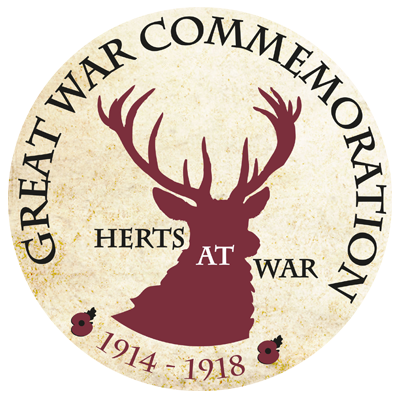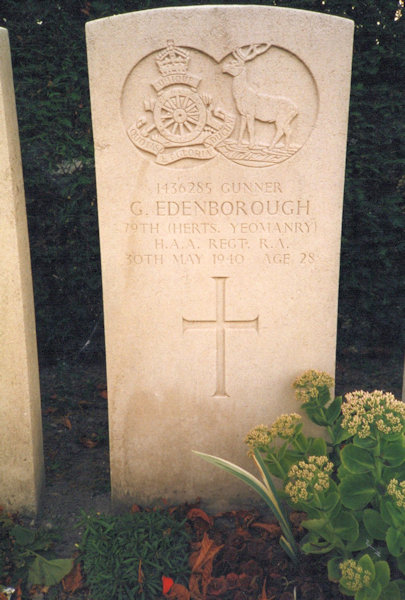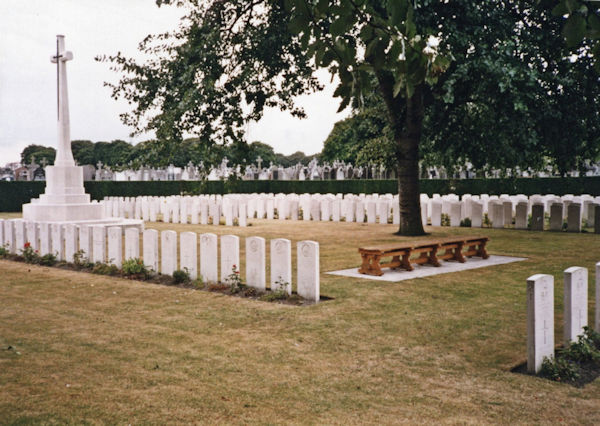Name
Greville Edenborough
Conflict
Second World War
Date of Death / Age
30/05/1940
28
Rank, Service Number & Service Details
Gunner
1436285
Royal Artillery
248 Bty., 79 (The Hertfordshire Yeomanry) H.A.A. Regt.
Awards: Service Medals/Honour Awards
Cemetery/Memorial: Name/Reference/Country
DUNKIRK TOWN CEMETERY
Plot 2 Row 17 Grave 13.
France
Headstone Inscription
Not Researched
UK & Other Memorials
Hitchin Boys’ Grammar School Memorial (WW2), Memorial in St. Alban's Abbey, St Albans
Biography
He was born in London and attended the Hitchin Grammar School from 1923- 1928, coming to the school with his elder brother. He won the esteem of everyone by his cheerful disposition. At football he played left back and a report at the time said that he was a good but erratic player and a good tackler but "He must cultivate steadiness". He excelled at hockey and represented the school in 1928. In the same year he obtained his School Certificate and on leaving went to South Africa. He returned in 1932 and took up land valuation work and played hockey for Stevenage Imps Club, becoming its Captain in 1938.
At the outbreak of war he joined up and was allocated Service Number 1436285. After being posted to an anti-aircraft battery, he went to France with 248 Battery of the 79th (Herts Yeomanry) Anti-Aircraft Regiment, Royal Artillery. This unit had converted from the Herts Yeomanry in 1938. It was mobilised from Watford and was a heavy anti-aircraft unit equipped with 3.7 inch guns. The Regiment served in the 3rd A.A. Brigade of the 9th A.A. Division with the British Expeditionary Force between the 6th March and June 1940, principally in the defence of Le Harve. They manned a static 3.7 inch gun position at Pare de la Heve on the edge of the cliff in front of the lighthouse.
After the German breakthrough in May 1940, he was boarding a ship by ladder at Dunkirk, when he was struck by a bomb and died of wounds. He was one of only two casualties in the Regiment at this period and the only fatality in the Battery. He was also the first Old Boy of the Hitchin Grammar School to become a fatal casualty in the Second World War.
He was buried in Dunkirk Town Cemetery in Plot 2, Row 17, Grave 13.
Acknowledgments
David C Baines – ‘Hitchin’s Century of Sacrifice’, Hitchin Grammar School Chronicle, ‘History of the R.A. - Years of Defeat 1939-41’ by M. Farndale



